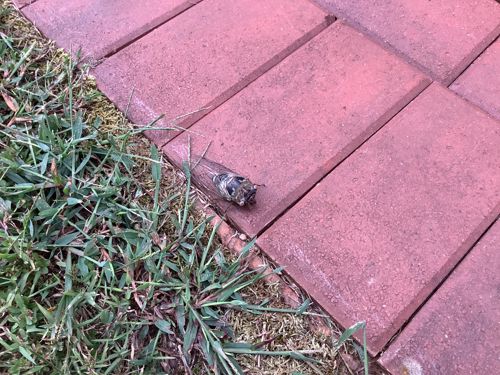Cicada exuvia
Scientific Name: Cicadidae (exuvia)
Order & Family: Hemiptera (Order), Cicadidae (Family)
Size: The exuvia in the image appears to be from a medium to large cicada, likely ranging from "1" to "2.5" inches ("2.5" to "6.5" cm) in length. Adult cicadas vary greatly by species, from less than an inch to over three inches.

Natural Habitat
The exoskeleton (exuvia) is typically found clinging to trees, bushes, fences, or other vertical surfaces near the ground where the nymph emerged. Live cicadas inhabit various terrestrial ecosystems including forests, woodlands, grasslands, and suburban areas.
Diet & Feeding
The exuvia itself does not consume food. Adult cicadas feed on xylem sap from trees and shrubs using their piercing-sucking mouthparts. Cicada nymphs feed on root sap while underground.
Behavior Patterns
The exuvia is the shed exoskeleton of a cicada nymph after it has undergone its final molt into an adult. Nymphs live underground for extended periods (from 2 to 17 years depending on the species), feeding on root sap. When ready to become adults, they emerge from the ground, climb onto a vertical surface, and shed their skin. The empty shell is left behind.
Risks & Benefits
Risks: None to humans. Benefits: Cicada exuviae themselves are harmless. The emergence of cicadas can provide a food source for various predators (birds, mammals). Nymphs can aerate soil. In large numbers, cicadas can cause minor damage to young trees from egg-laying, but this is rarely severe. The 'singing' of male cicadas is a distinctive sound of summer in many regions.
Identified on: 10/8/2025